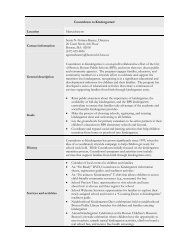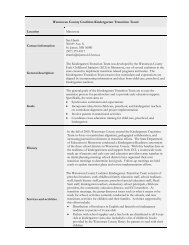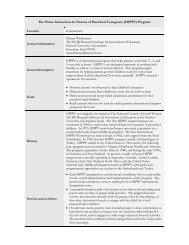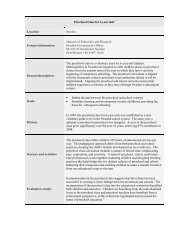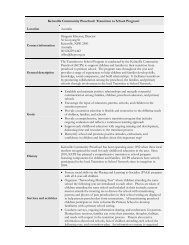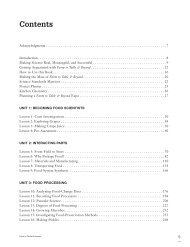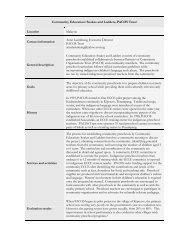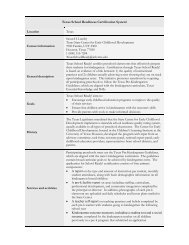Proceedings of the Fourth Annual Teachers College Educational ...
Proceedings of the Fourth Annual Teachers College Educational ...
Proceedings of the Fourth Annual Teachers College Educational ...
You also want an ePaper? Increase the reach of your titles
YUMPU automatically turns print PDFs into web optimized ePapers that Google loves.
This year, <strong>the</strong> first participant group was engaged in a viewing exercise akin to White's framework comprised <strong>of</strong><br />
recording, conversing and categorizing at a museum. Ano<strong>the</strong>r group viewed a sculpture through digital video<br />
played in a loop (see Figure 1), while providing feedback <strong>of</strong> <strong>the</strong> aes<strong>the</strong>tic encounter. Individual moments are<br />
graphed and shared. Next, surveys ga<strong>the</strong>red demographics, art background, reasoning skills, perceptions, as<br />
well as <strong>the</strong>ir orientation towards museum-based exhibits and technology.<br />
Five cues guided <strong>the</strong> participants during <strong>the</strong>ir viewings:<br />
• What is <strong>the</strong> significance <strong>of</strong> <strong>the</strong> artwork?<br />
• How am I able to relate to <strong>the</strong> object?<br />
• How can o<strong>the</strong>rs relate to <strong>the</strong> object?<br />
• What is <strong>the</strong> art expressing?<br />
• What is <strong>the</strong> artist's message?<br />
Results<br />
The participants provided robust details about <strong>the</strong>ir aes<strong>the</strong>tic encounter as <strong>the</strong>y shared thoughts and feelings<br />
formed in <strong>the</strong> digitally-mediated environment. The participants were able to number and classify <strong>the</strong> sequence <strong>of</strong><br />
moments with ease. Information was arranged onto a graphical chart.<br />
This analytical display, coined <strong>the</strong> aes<strong>the</strong>tigraph (Ko, 2012), was pivotal for <strong>the</strong>m to visualize and discern <strong>the</strong>ir<br />
own progress towards understanding and learning. Coupled by a survey, <strong>the</strong>y elaborated as much as verified<br />
<strong>the</strong> plausible transfer <strong>of</strong> content mentioned via encounters. The meaning-making process in <strong>the</strong> learning design<br />
was instrumental for promoting critical thinking. For example, in <strong>the</strong> illustrated sequence (see Figure 2), <strong>the</strong> 9 th ,<br />
16 th and 21 st moments for <strong>the</strong> participant convey references to “group behavior,” “cancerous cells” and “sociopolitical<br />
movement,” respectively. Knowledge that develops from <strong>the</strong> context <strong>of</strong> social settings at <strong>the</strong> museum to<br />
<strong>the</strong> one presented by <strong>the</strong> computer (social network) instantiates <strong>the</strong> possibilities that aes<strong>the</strong>tically doing so can<br />
enable learners to tap into sociology, biology and politics.<br />
Significance<br />
The aes<strong>the</strong>tic exercises, survey responses and graphs validate that museum-based learning facilitates<br />
knowledge creation. The technologically-induced experience has opened up possibilities, conducive to fur<strong>the</strong>r<br />
support multimodal learning and curricular standards, such as civic and cultural education, language arts, IT and<br />
STEM. Repeated moments <strong>of</strong> encounter with <strong>the</strong> sculpture were worthwhile for <strong>the</strong>m to articulate <strong>the</strong> “ineffable.”<br />
In <strong>the</strong> process, <strong>the</strong>y were engaged in critical thinking within <strong>the</strong> context <strong>of</strong> <strong>the</strong>ir exposure, and sought resolves to<br />
social, scientific and technological problems. They applied knowledge through dialogical explorations à la<br />
STEM-related principles.<br />
28



